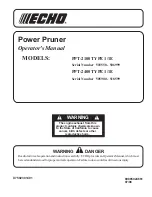
5.8 TURNING WORK LIGHT AND LASER GUIDE ON/OFF
- To turn the work light On, press the work light switch (A)
Fig.5.7upwards to the “I” On position. To turn the work light Off,
press the work light switch downwards to the “O” Off position.
- To turn the laser guide On, press the laser guide switch (B)
Fig.5.8 upwards to the “I” On position. To turn the laser guide
Off, press the laser guide switch downwards to the “O” Off
position. Go to next page for laser guide adjustment.
FIG.5.8
6. ADJUSTMENTS & OPERATION
-13-
6.1 USING DUST CHUTE- HIGHLY RECOMMENDED
This bandsaw comes with a 1-1/4” dust chute which accepts a
standard 1-1/4” vacuum hose.
6.2 BASIC BAND SAW OPERATIONS
A bandsaw is basically a curve cutting machine. It is also used for straight line cutting such as crosscutting, ripping, mitering, beveling,
compound cutting. This bandsaw was designed to cut wood, wood-like products and plastics only.
For general cuts, follow the pattern lines by pushing and turning the workpiece simul-taneously. Don’t attempt to turn the workpiece
while engaged in the blade without pushing it. If you don’t push the workpiece in this situation, the workpiece could bind or twist the
blade.
A curve cut is best performed by keeping the pattern line with the blade while turning the workpiece before the radius or the curve is
cut. The blade should cut in the middle of the pattern line (saw kerf) since wood cutting bandsaw blades are thin.
Wood dust and chips in a confined area can give rise to fire or
an explosion. Keep ignition sources away from bandsaw. Keep
saw dust to a minimum by cleaning the inside of the bandsaw
after every use.
Wood dust and chips in a confined area can give rise to fire or
an explosion. Keep ignition sources away from bandsaw. Keep
saw dust to a minimum by cleaning the inside of the bandsaw
after every use.
To avoid blade contact, adjust the upper guide assembly so that it barely clears the workpiece.
Relief cuts are made when an intricate curve (too small a radius for the blade) is to be cut. A relief cut is
made by cutting through the scrap section of a workpiece to the curve in a pattern line and then carefully
backing the blade out. Several relief cuts should be made for intricate curves. Then follow the pattern line
as sections are cut off of the curve “relieving” blade pressure.
WARNING
WARNING
WARNING
WARNING
FIG.6.1
- Use both hands while feeding the workpiece into the blade. Hold the workpiece firmly against the table. Use gentle pressure. Do not
force the workpiece, but gently allow the blade to cut.
- The smallest diameter circle that can be cut out is determined by the width of the blade. A 1/4” blade will cut a minimum diameter of
approx.1-1/2”. A 1/8” wide blade will cut a minimum diameter of approx. 1/2”.
A
B
































